The Keel-billed Toucan (Ramphastos sulfuratus), also known as the Rainbow-billed Toucan, is one of the most beautiful and colorful bird species and is a captivating and iconic bird species that captures the imagination with its vibrant colors and unique beak. Native to the tropical rainforests of Central and South America, this remarkable bird has become an emblem of the region’s rich biodiversity and is often featured in art, folklore, and nature documentaries.
Keel-billed Toucan images
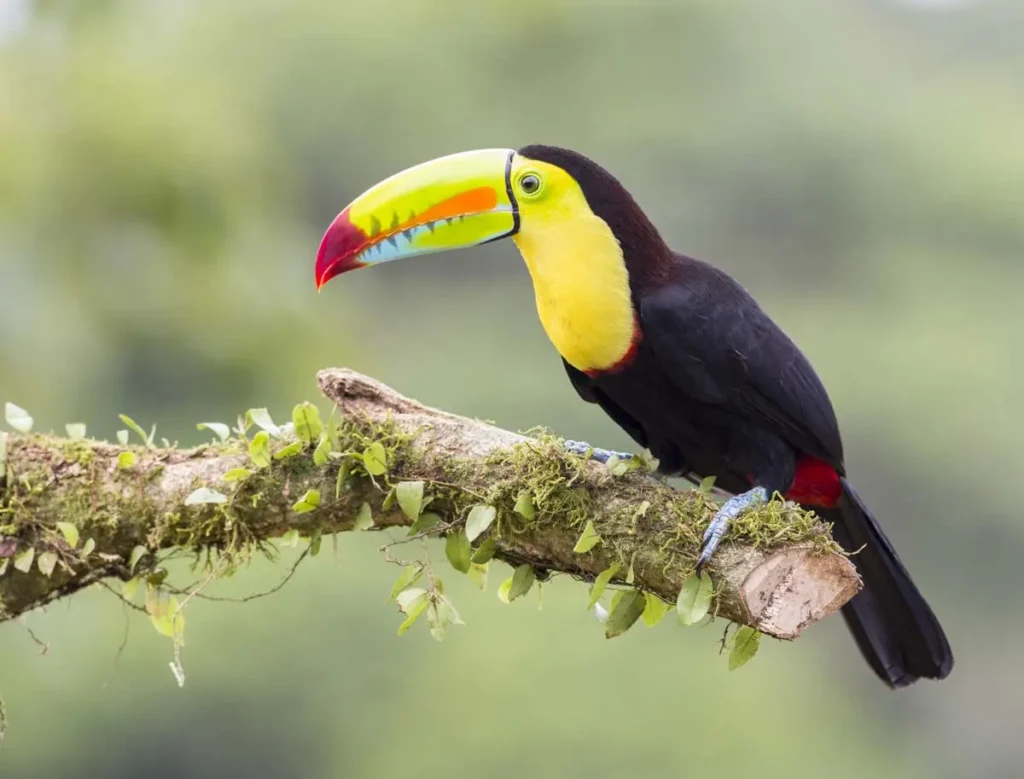

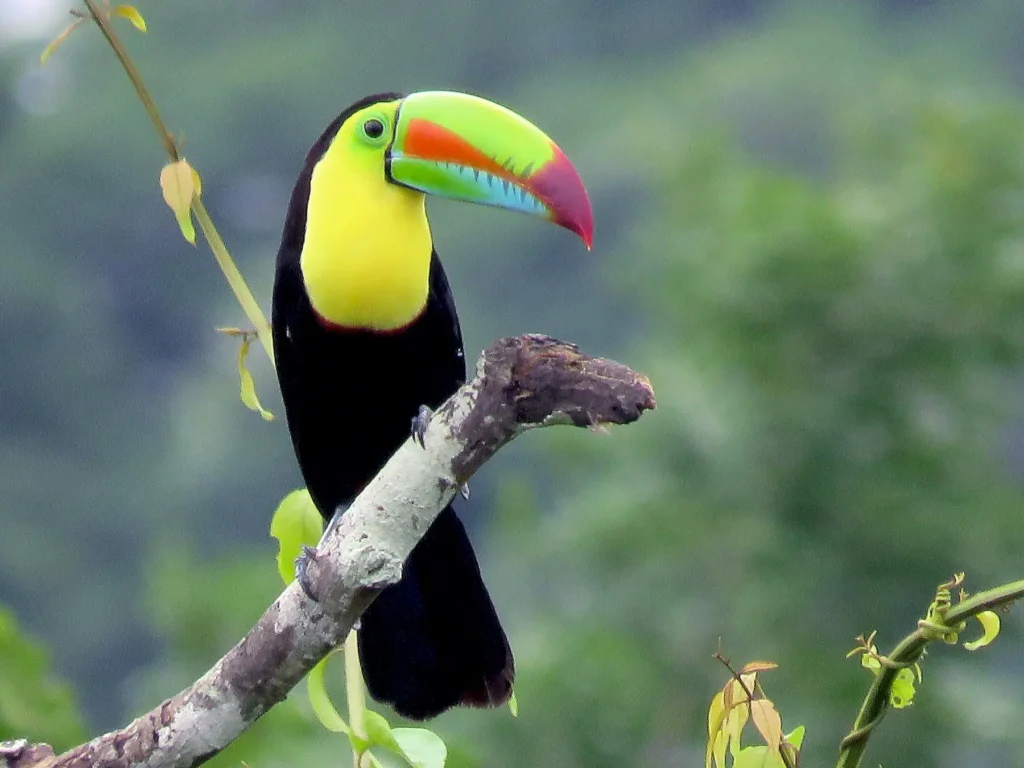
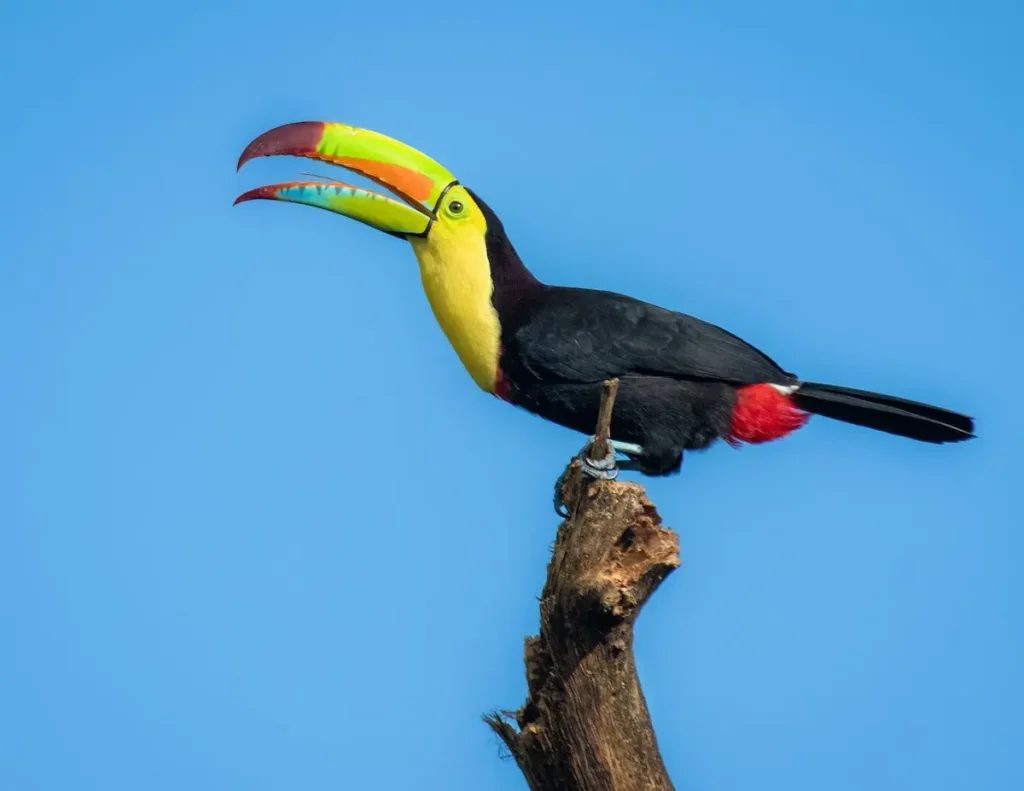
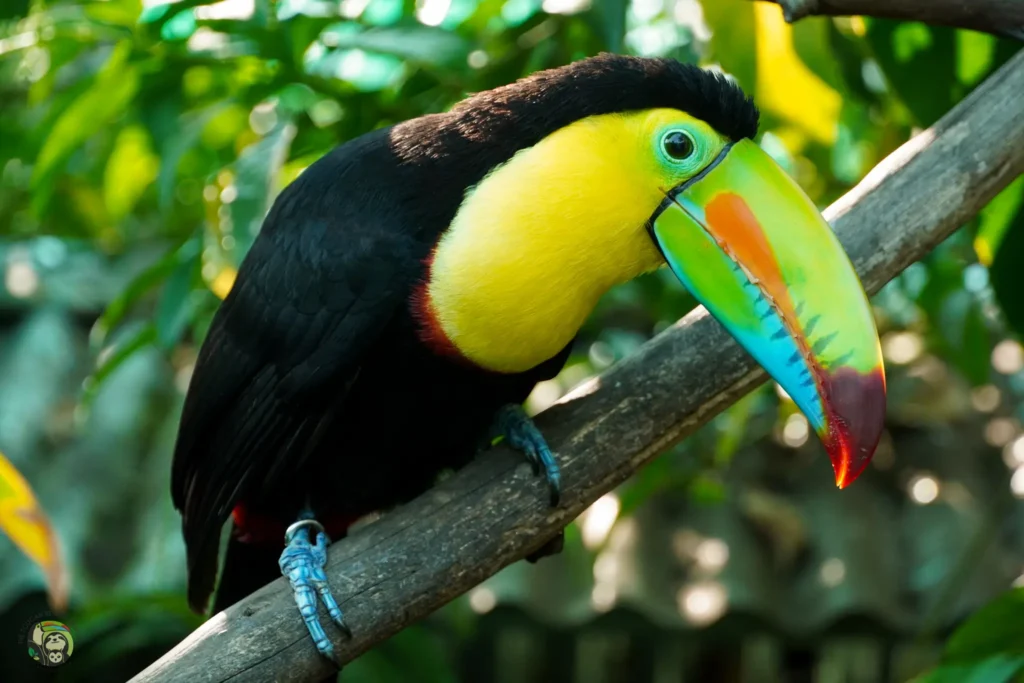
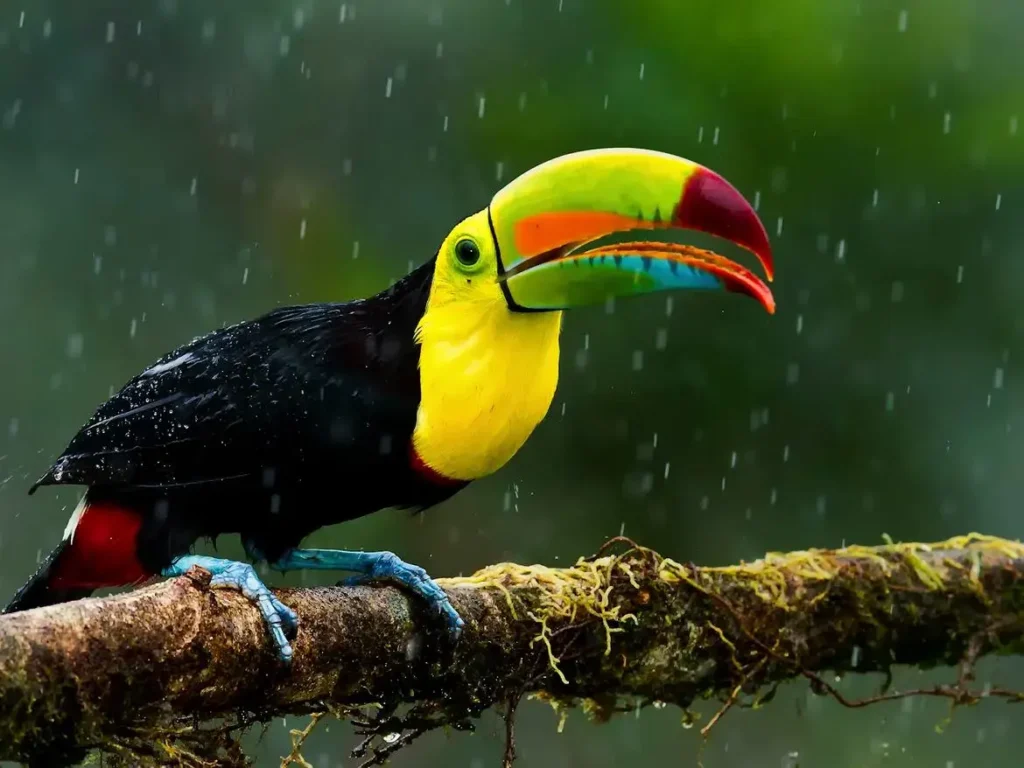
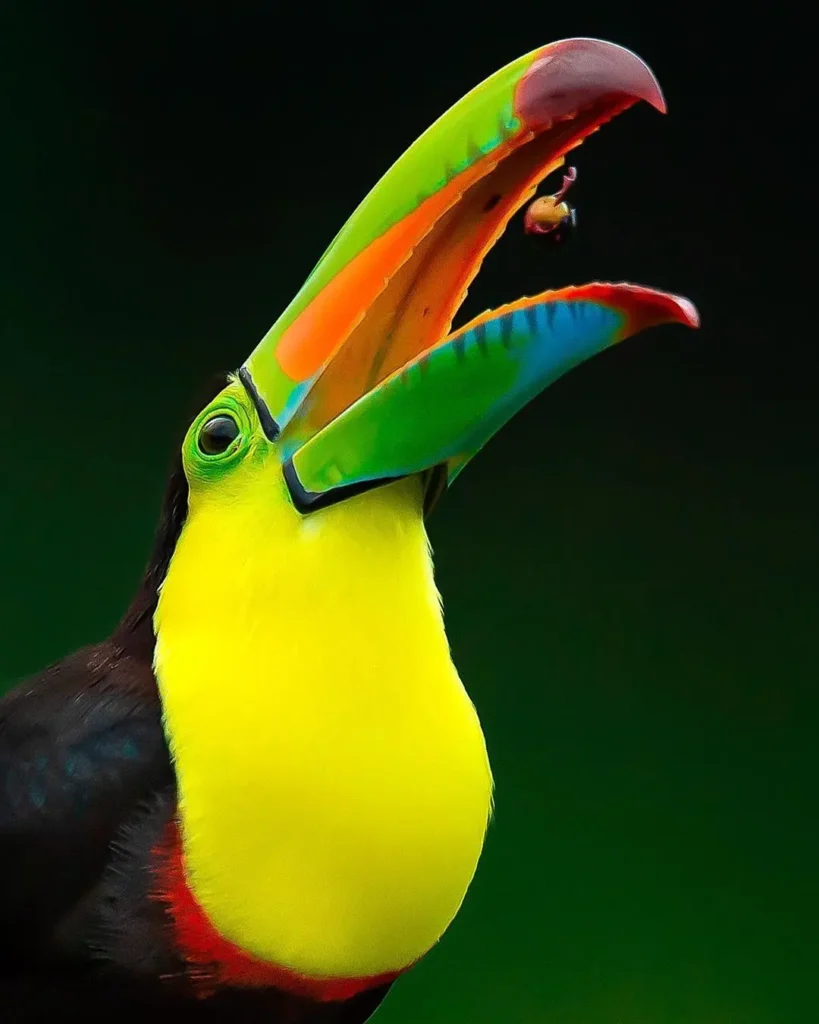
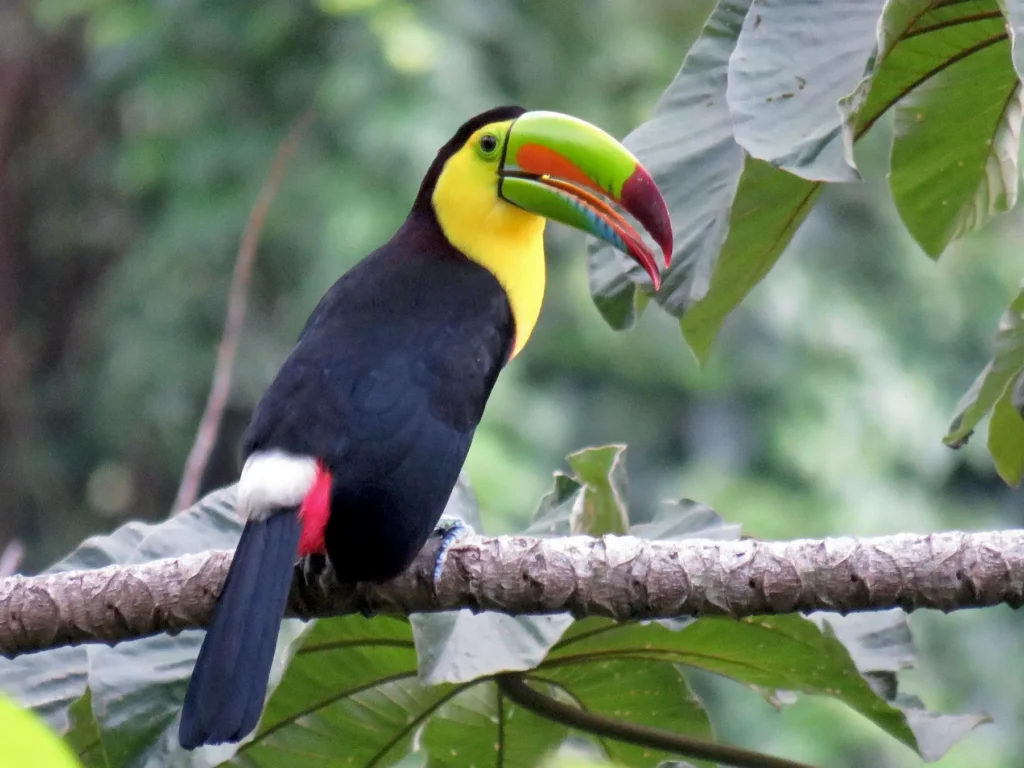
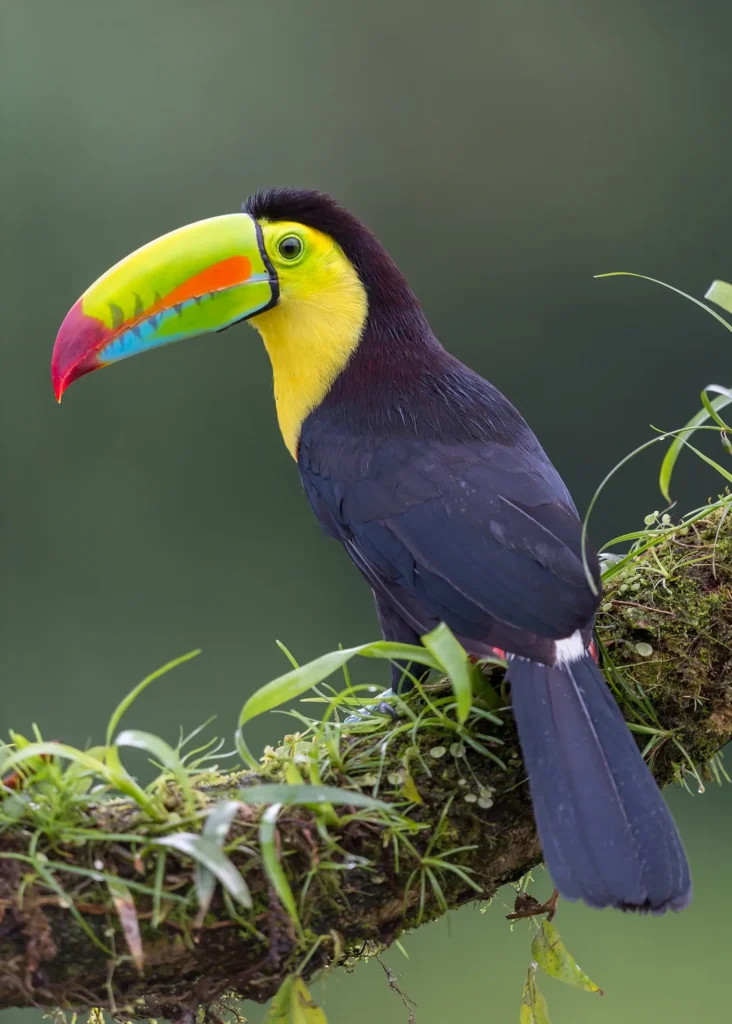
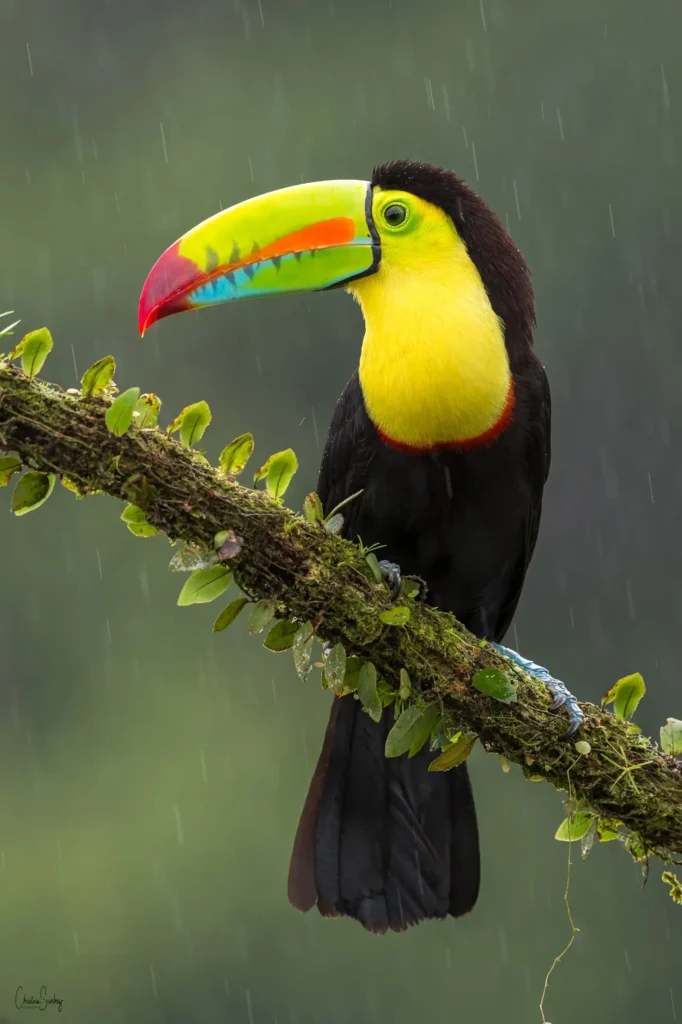
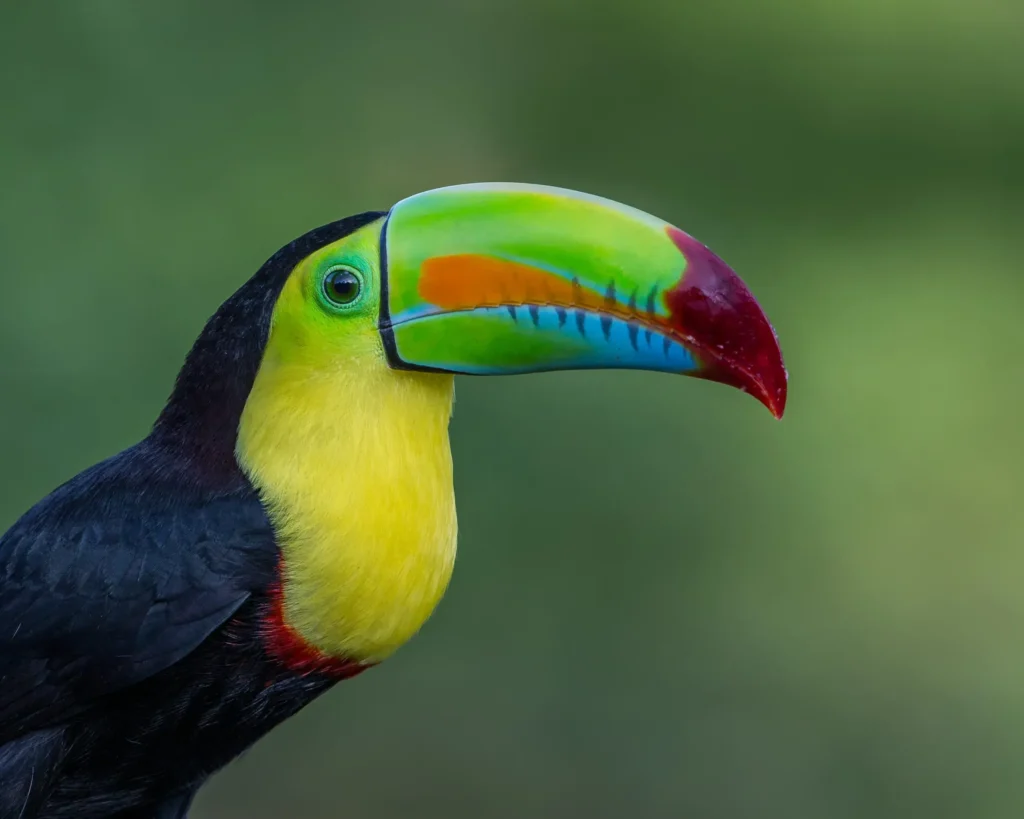
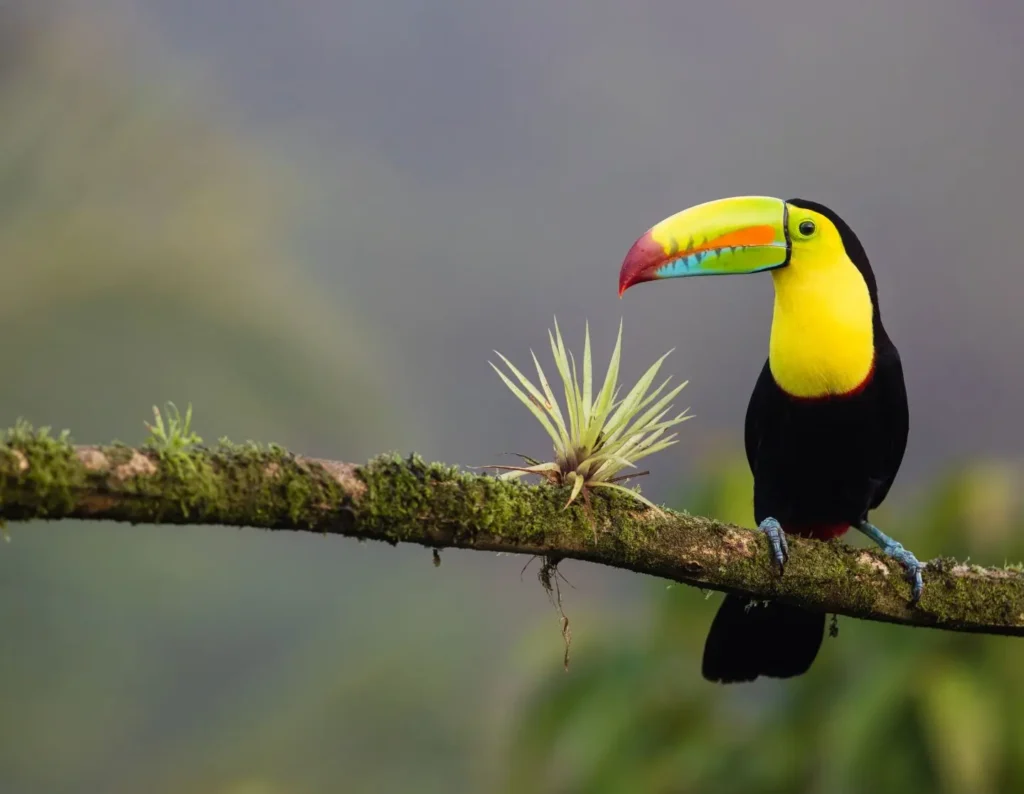

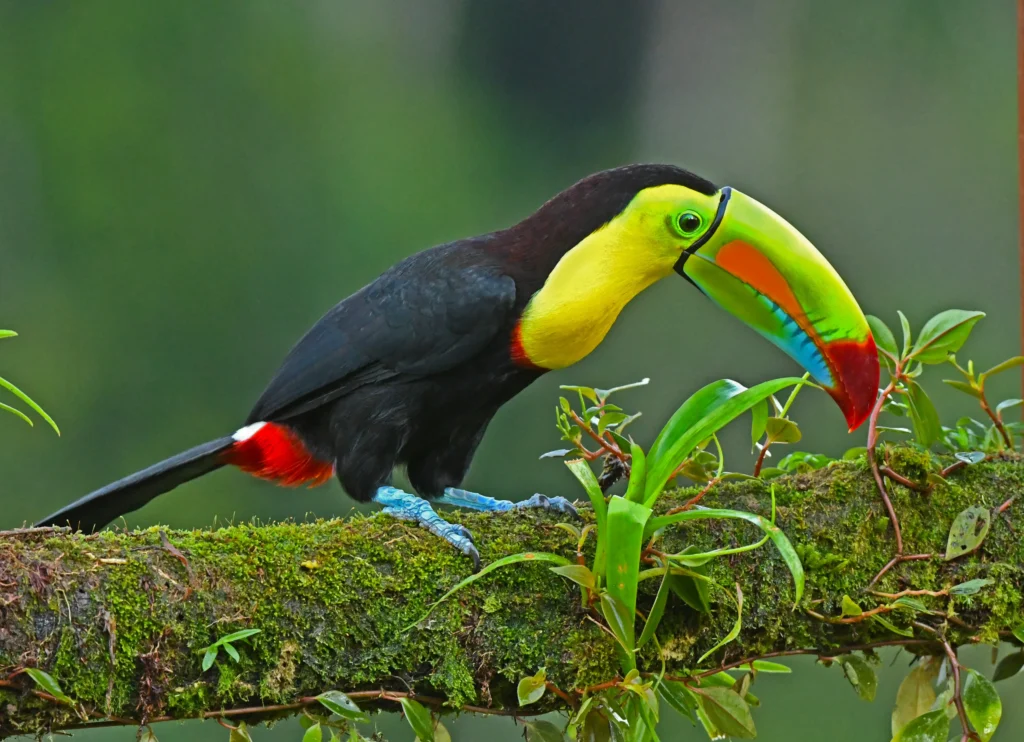
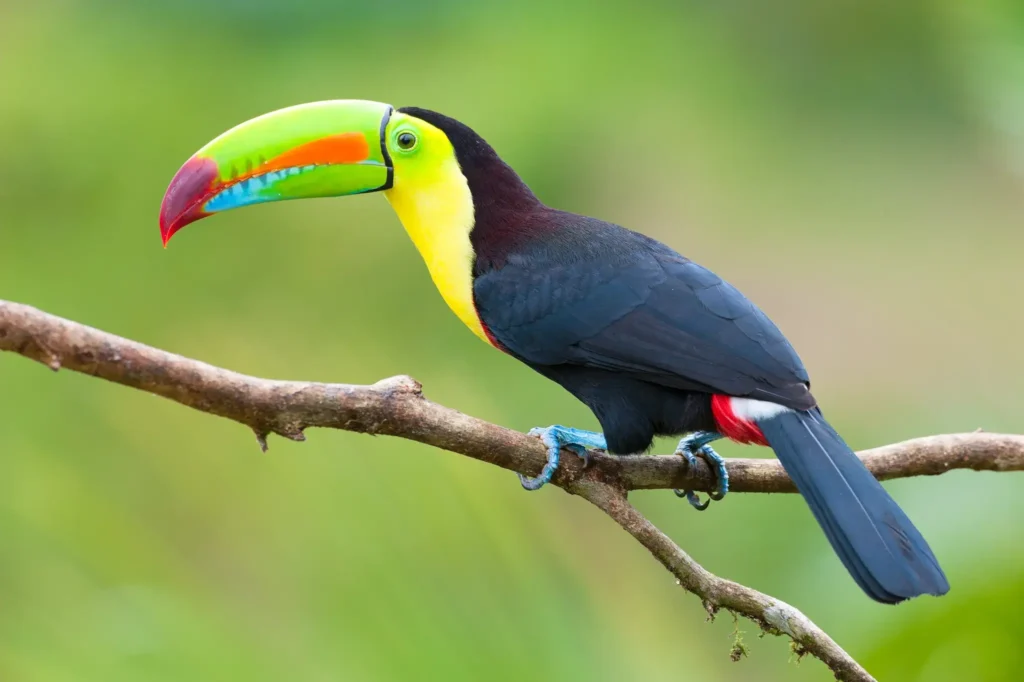
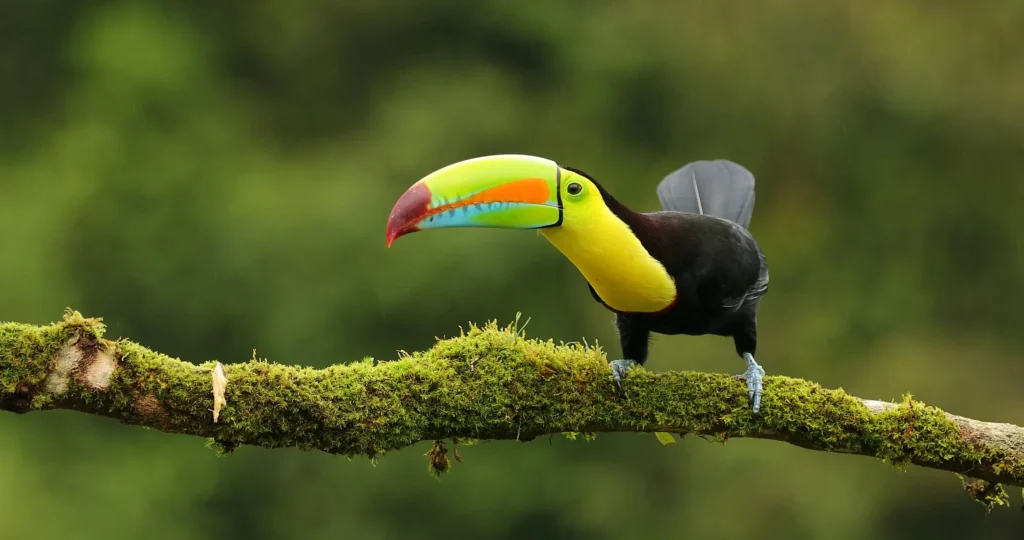
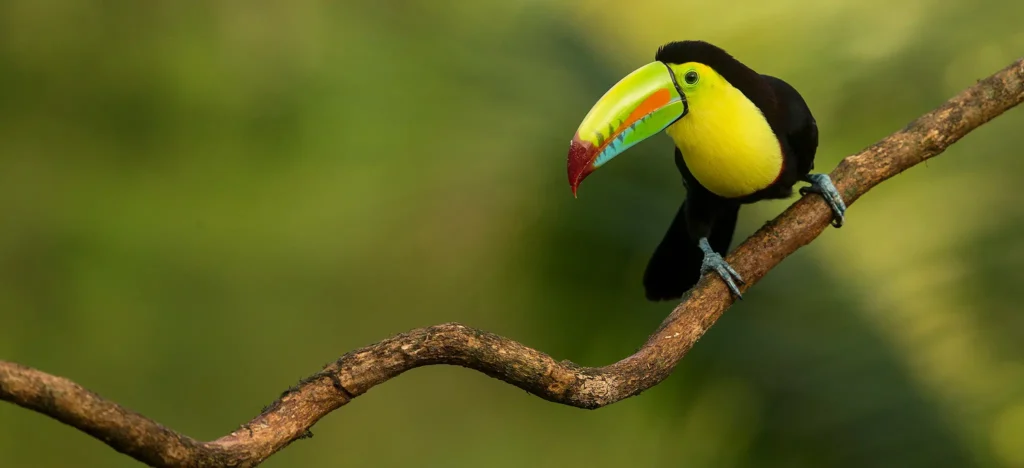
Facts about Keel-billed Toucan
In this article, we will explore the fascinating world of the Keel-billed Toucan, delving into its appearance, habitat, behavior, diet, and conservation status.
The Keel-billed Toucan is recognized for its large and colorful beak, which is one of the most striking features of any bird species. The beak is large, lightweight, and curved, with hues of green, blue, yellow, and red, giving it a vibrant and rainbow-like appearance. It is made of a fibrous protein called keratin, the same material that makes up human hair and nails. The purpose of the beak goes beyond its stunning visual display—it is also an efficient tool for feeding and manipulating objects.
These toucans are predominantly found in the lowland rainforests of Central America, including countries such as Belize, Costa Rica, Honduras, and Panama. They prefer habitats with abundant fruit-bearing trees and a dense canopy cover. The Keel-billed Toucans are arboreal, spending most of their time in the trees, and are well adapted for an aerial lifestyle. They have strong wings, allowing them to fly with agility through the forest canopy.
Keel-billed Toucans are social birds and often gather in small flocks. They communicate with a variety of calls, including a croaking sound and a distinctive yelping call that can be heard echoing through the rainforest. These vocalizations play a crucial role in maintaining social bonds and establishing territory.
The diet of the Keel-billed Toucan consists primarily of fruits, especially figs, but they are also known to eat insects, small reptiles, and bird eggs. Their beaks are perfectly designed for plucking and peeling fruits, enabling them to access a wide range of food sources. Interestingly, Keel-billed Toucans have a unique feeding behavior where they throw their heads back and swallow the fruit whole. This allows them to efficiently consume large fruits without the need for extensive chewing.
In terms of conservation, the Keel-billed Toucan is currently classified as a species of “Least Concern” by the International Union for Conservation of Nature (IUCN). However, they still face threats due to habitat loss and fragmentation caused by deforestation. The preservation of their forest habitat is vital for their long-term survival. Efforts are also being made to combat the illegal pet trade, as toucans are sometimes captured and traded as exotic pets.
In conclusion, the Keel-billed Toucan is a fascinating bird species that enchants us with its vibrant appearance and remarkable beak. Its presence in the rainforests of Central and South America adds a touch of exotic beauty to these diverse ecosystems. By raising awareness about the importance of habitat conservation and supporting initiatives that protect these unique birds, we can ensure that future generations can admire the beauty and wonder of the Keel-billed Toucan in its natural habitat.








